I was planning to write this post this July, when my fourth Randonneur Round the Year series (12 subsequent calendar months with at least a 200km ride) was supposed to come to an end.
Unfortunately, the series broke in May and I currently have more time on my hand than I want. Two days after completing the London-Wales-London 400km Audax on May 6, I had a little mishap on my Brompton in downtown Frankfurt.
The result was a stellate open patella fracture which led to a short-notice appointment with the surgeons of Frankfurt trauma center (BG Unfallklinik). I was in the operating theatre just a few hours after the crash, and spent the following week in hospital.
I hope to be back in the game in about three months, with enough time to regain my fitness for Paris-Brest-Paris 2019. I’m back to zero, but I’ll be back.
So here are the key lessons I took home in 55 completed Audaxes, including Paris-Brest-Paris 2015 and London-Edinburgh-London 2017, and a total of 16785 long-distance km since July 2014.
Lesson 1: Perfect Strangers
(It’s not about the distance, it’s about the people you meet)
Everyone I tell about Audaxing is blown away by the rides’ sheer distance . Going 200km by bike in one go? Bonkers! 1400km within five days? Impossible.
I was also fascinated by the apparently insane distances, and the challenge to tackle them. But the key reason why I love Audaxing has changed over time.
Long-distance cycling is a sterling opportunity to meet interesting people from the most unlikely areas of life. The threshold to start a conversation is very low. And if you don’t get on with each other, you don’t even need an excuse to leave – you just stop for pee, or ride a bit more slowly.
Most of the time, you’ll meet really nice people, so you’ll enjoy chatting for hour after hour. You’ll get insights into parts of our life and society that otherwise are very hard to get, at least in such a condensed form.
This can be a great distraction from the agony one sometimes has to go through on an Audax.
Audaxing is like Tinder, just without the sex.
Just to name a few, among the people I met on long-distance events is an ex-soldier who served during the troubles in Northern Ireland and is suffering from PTSD, a policeman chasing down drug dealers and arms traders, another ex-soldier who served in Iraq, used to be an alcoholic and now is a staunch vegan, a Brazilian married to a French woman in England and employed by a German company, a medical student in her final university year who did the 1400km London-Edinburgh-London ride as her first Audax and was much stronger than me, a competition lawyer working for one of the largest US internet companies and a photographer specialised in taking stunning pictures of depressing industrial wastelands.
One particularly striking encounter happened on the evening after PBP 2015, when I joined a few other Audax Club Hackney riders for dinner and drinks. At the end, somebody I had never met before announced: “Let me take care of the bill!”
He did not allow us to talk him out of this decision. “I’m so happy to be here, and in the position to afford it, I really want to do it.” I only learnt his name a year later, when we met again on another ride. Turned out he’s a very successful social entrepreneur whose business is helping to save thousands of lives each year – and one of the best cycling companions you can hope for.
After having ridden for a few hours together, you often are familiar with half of a person’s life story, and feel like you have been knowing each other for years. It’s really a special bond that emerges.
Often, you’ll never see each other again after a ride; or you will run into each other on a different ride, and only chat for a couple of minutes, as the previous ride’s magic bound is gone. But some of the people I met on Audaxes have turned into really close friends.
Lesson 2: Think for yourself
(Ride at your own speed)
The following may sound paradoxical given what I’ve just written about the social aspect of Audaxing. But in fact it’s just the flipside of the same thought. Besides enjoying the opportunity to meet fascinating people, another key skill to learn is to think for yourself and to leave other riders when it’s appropriate.
This is particularly true for long rides like PBP and LEL. While many riders do such kind of brevets from start to finish with one or several mates, I would not fancy this and would strongly advise against trying.
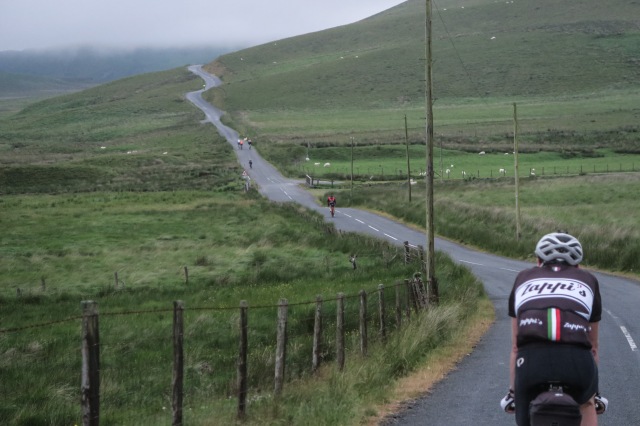
First of all because you’ll miss out on the Tinder-without-sex aspect. Secondly because it’s really difficult to ride for 4 or 5 days with the same person.
The controls on long rides are as large as they are busy. It’s very easy to lose sight of your riding companion, and any reunion attempt means you waste time you could use to ride, eat or sleep.
Another issue is that it’s rather unlikely that you and your mate will have your low points at the same time. If you wait for each other, you’ll slow down each other.
If you start with some friends, it’s obviously necessary to discuss the ground rules beforehand so everyone starts with the same expectations. With people you meet along the way, there’s generally no need to discuss this. As one experienced Audax rider put it to me once: “The beauty of our sport is that you only wait if you want to.”
The one sensible exception to this “I’m free” principle probably is riding through the night. I try to avoid riding completely on my own between 2am and 5am (actually, in an ideal world, I try to be off the road during these hours, as this is usually the coldest point of the night; and also the time when my circadian rhythm reaches its low point).
If you have a found a group to ride with through the night, it makes a lot sense to stick together, as you can give each other a hand in case of a mechanical, and chatting with each other is a good way of preventing to fall asleep on the bike.
Lesson 3: We’re Wastin’ Time
(Success or failure on long rides depends on the first 24 hours)
One of the most common mistakes by Audax newbies is to head off too fast at the start. It happened to me several times, as it’s so tempting to get on the rear wheels of the really fast kids. Don’t – otherwise you’ll pay a high price later on, especially on rides of 400km and more.
The best way to prevent this is probably to ride with a power meter. I don’t have one. As a second best solution, I use a heart rate monitor and – especially on long rides – aim to keep my heart rate below 140 bpm.
I know that at that effort level, I won’t blow up at a later point of the ride.
However, the evil twin of heading off too fast is wasting too much time at the beginning. This is a less obvious mistake, again in particiular on the really long rides. On PBP and LEL, it’s basically the first 24 hours that will make the difference between success and failure; or at least between having an enjoyable time or constantly worrying if you’ll be able to finish within the time limit.
It’s not about going particularly fast over the first 24 hours – it’s about riding consistently and not stopping a lot. If you stop too early to get some sleep, you’ll constantly bump against the time limit later on, as you have not built up too much time buffer once you were still fresh.
It was Jean-Gualbert Faburel, the Vice President of Audax Club Parisienne, who gave me the first glimpse of the concept. “Avoid stopping too soon, because you would have to leave again in the middle of the night to avoid being outside the time limit,” he told Jan Heine in an interview back in 2010.
I also read somewhere that on PBP, riders who stop for sleep before Tinteniac (about 350km from the start) have a disproportinate higher probability of failure.
After PBP 2015, when I analysed my GPS file, I realized that it had taken me 39 hour for the first half of the ride to Brest, but 48 hours to get back. Interestingly enough, my moving average only dropped by 0.5 kph or so, but the time off the bike went through the roof.
A similar picture emerged on LEL 2017. It took me precisely 48 hours on the dot to ride from London to Edinburgh – but I needed 61 hours for the return leg. In both cases, this did not involve any really complicated mechanicals.
Roughly speaking, this suggests I need 25 per cent more time for the same distance in the second half of a long brevet, as I need more sleep and more rest the longer the lark goes on.
The key takeaway from this observation is this one: Don’t waste unnecessary time over the first 24 or so hours and don’t expect to make good any lost time in the second half. You’ll have to earn your time buffer over the first day and night, and then eat into it.
On PBP, you don’t really have a choice but to follow such a strategy, as the time limit on the way out is tighter than the one on the way back. Moreover, the PBP organizers are quite serious about intermediate time limits. If you’re out of time on the way, you can expect to get disqualified.
On LEL 2017, the organizers were much more generous in this regard and promised not to disqualify anyone in time deficit with a reasonable chance of finishing in time.
My theory is that this – combined with the fierce headwinds in the Fens on the way back – tripped up many riders who took it too easy on the way north. In the first night, the control in Louth was flooded with riders who tried to get some sleep. As there were many more riders than beds, many could not really get real rest and left rather knackered. I carried on through the night and got two hours of sleep at around 6am in Pocklington, which was already empty as most riders who had spent the night there had already gone.
The ability to ride through the night is another important skill to learn prior to PBP, as starters in the 90 hour group – which always gets on the road in the late afternoon and early evening – have little choice but to ride through the first night and ideally the following day.
As ACP’s Jean-Gualbert Faburel puts it:
“Many people come to PBP without ever having spent a complete night on the bike. The first night of PBP can come as a shock for them. Thus, we have a very large number of abandons after 400 km, which is unnecessary.”
Lesson 4: You keep on moving
(Stopping less is a much easier way to go faster than to go faster)
Unless you’re super fit and super fast – which I am not -, one of your key areas of concern will be to increase your speed. The less time you need to come around, the easier an Audax becomes, as you are spending fewer hours in the saddle and – on multi-day rides – have more time to sleep.
The most straightforward thing to become faster is, well, to ride faster. This, however, is easier said than done and can be a risky strategy on longer rides. As discussed earlier, if you head off too quickly, you may blow up at a later. Since I started Audaxing, I managed to increase my sustainable moving speed by about 1 to 4 kph, mainly depending on the amount of climbing and the time of year.
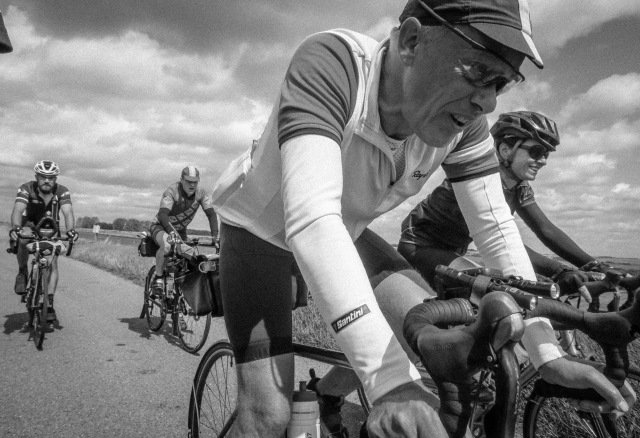
However, a much easier and more efficient way of getting faster is to stop less often, and for shorter times. The clock never stops on an Audax. My preferred metric to look at this is the number of minutes stopped per 100km on a ride.
When I started Audaxing, a common number on 200km rides were about 60 minutes stopped per 100km, and by the end, I was often feeling rather knackered. My “best” result so far was on my January 200 this year, when I came around with just 24 minutes per 100km.
That obviously makes a huge difference, as I was home more than an hour earlier while still riding at the same pace. (While I was very pleased by this result, it’s still not really good compared to the real Gods of the Audaxing world, who barely stop at all.)
Look at it another way: A moving average of 20kph (I’m usually doing 22-24 kph, but it’s easier to calculate with 20kph) means that covering 1km will take precisely 3 minutes. If you stop for 30 minutes, while I keep going at 20kph, I’ll be 10 km ahead of you.
The key challenge is to find the maximum pace you can sustain over the whole ride, and to minimize the time off the bike. A good tip is to set a smartphone timer for the time you want to stay at a control, as it is really easy to forget the time.
Especially on multi-day rides, you can burn many hours at control without really noticing. My “control discipline” usually diminishes over time. While I’m good at that in the first half, things often pan out differently in the second one.
Lesson 5: Forget about the future
(Don’t think about the distance)
I was a touring cyclist long before I got sucked into the Audaxing madness. One of the things I learned early on was not to have the trip’s distance displayed on the cycling computer, as the numbers only change really slowly, which was driving me insane.
A standard advice for any endurance activity is to mentally break the whole thing into stages – on a 1400km ride, don’t think about how you might feel after 1100km or where you might sleep the night after next. This would make the task appear super-human. Just think to the next control. This piecemeal-strategy works surprisingly well.
However, before one of my first Audaxes, a very experienced rider gave me a piece of advice that pushed this to the next level. She recommended not to think at all about the distance to the next control. “Just keep riding, and you’ll get there eventually.” I was initially puzzled. Is this at all possible?
I didn’t manage to heed the advice immediately, but I got there in the end. It’s so liberating! And given that on a long distance ride, you’ll be busy riding your bike for most of the day anyway, and you will want to keep your break at the next control as brief as possible. But there is little point in getting worked up how many or few km are left.
These days, I’m sometimes even too good at not thinking about the remaining distance to the next control. On a 300km ride I rode this March, I almost rode past the first control as I was not expecting it that early.
Lesson 6: Paint it black
(Dark Moments will come, but they will also go)
Cometh the time, cometh the depression. Particularly on long rides of 400km or more, I often have what I call my “dark moments”. They happen normally at some time between 3am and 5am, after 20 or more hours in the saddle, when the tiredness kicks in.
This is the moment when I’m quite often meeting my emotional low points. I get grumpy, slower, and ask myself what the heck I’m doing here, and just feel horrible. On the last 400km I rode a couple of days before my crash in Frankfurt, I at one point felt so miserably that I decided not to ride the 600km I was planning to do two weeks later.
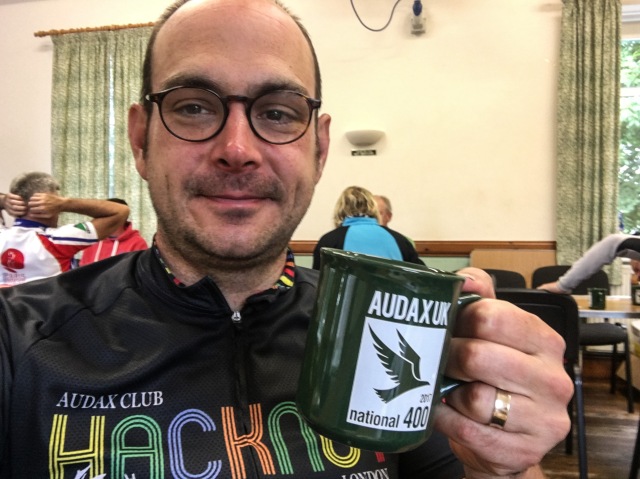 (On the next day, after some sleep and having ridden back another 50km to London in the early morning because there were no trains, I became more reasonable again and changed my mind again, deciding to do the 600 after all.)
(On the next day, after some sleep and having ridden back another 50km to London in the early morning because there were no trains, I became more reasonable again and changed my mind again, deciding to do the 600 after all.)
Every long-distance cyclist, even the strongest, has such kind of moments. The best strategy to deal with the Black Dog is: just ignore it. This may sound incredible as long as you have not experienced it yourself, but your body can actually recover while carrying on. Have a rest at the next control, eat and drink something, and maybe get some sleep.
Afterwards, you’ll feel much better and will be in a position to carry on. A few hours later, odds are that will ask yourself how on earth you could have felt so downbeat.
One of the best pieces of advice I ever got in term of long distance cycling was this one: “No matter how bad you are feeling, always remember that it will get better if you carry on.”
A very good related tip is that should you ever find yourself considering quitting, especially on long rides like PBP or LEL, don’t take any final decision until you’ve eaten something and slept for a couple of hours.
Lesson 7: I’m lost
(Learn how to navigate)
Getting the navigation right is one of the most important things on any long-distance ride – and, for many riders, one of the biggest challenges as they struggle to get their navigations gadgets to work reliably.
On an Audax, the route isn’t sign-posted (PBP is an exception). In the old days, riders were using paper routesheets with cryptic instructions like “L @ T” (“Turn left at the T junction”) or “SO @ $ London” (“Straight on at the road sign that says ‘London’”). These days, most riders including me use GPS navigation devices which make life so much easier – if they work properly.
That’s a big if . The market leader in GPS navigation systems, Garmin, has developed a notorious reputation for producing good hardware and ropey software that often lets devices crash.
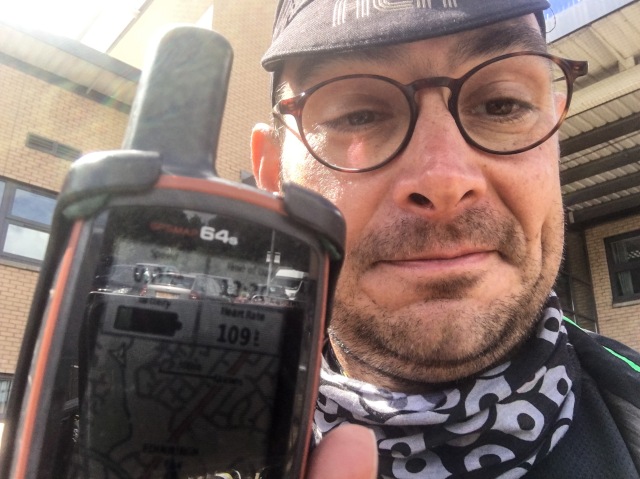
Cycling specific Garmins, the so called “Edge” series, in theory offer the biggest level of convenience, as they are small, light and offer turn-by-turn navigation. The flip side, however, is that they are made for shorter training rides and races rather than for multi-day adventures where they are used 24/7. One issue is that the Edge series has a built-in battery, and on longer rides, you have to carry power banks.
These days, some new interesting competitors to Garmin are emerging, primarily Wahoo and Hammerhead. While the general user feedback seems to be better, reviews still appear mixed.
I’m using a slightly more old-fashioned approach to navigation. Not “L @ T”-paper-based stuff, but a very simple but a very reliable way of GPS navigation. Instead of a cycling-specific Garmin, I’m using a device which was originally designed for hiking and looks like a mobile phone from the mid-1990s.
It’s bulky, heavier than the supposedly modern ones, runs on AA batteries which can be sourced at every 24-hour garage or corner shop, and is basically bomb-proof. Over the four years I’ve been using my Garmin GPSmaps 64s device, it never let me down.
Using it is slightly less convenient than the turn-by-turn features of more fancy Garmins. I basicially use the device like a digital map which shows me where I am, and have the track shown on the map as a black line which I then follow.
Regardless of the navigation device for choice, its also crucial to mount it securely to the bike. Again, the standard Garmin mounts are unimpressive. Time and again, I’ve seen riders whose Garmin fell off the bike during a ride.
On the fourth night of LEL, in pouring rain, I passed a cyclist who was trying to retrieve his Garmin which had fallen somewhere into the high grass of the verge. What a nightmare.
I use a mount called “Ez on/off” by RAMmount which is much better and secure. However, a few weeks prior to my crash, I still managed to drop the Garmin from the bike when I was riding down a steep descent with a very bad road surface.
The rattling was so bad that the device came loose an fell off. Amazingly enough, while the screen was cracked, it was still working. I managed to replace the screen for about $20, as spare parts are sold on eBay, but also bought a second GPSmaps 64s as a backup which from now on I’m carrying on longer rides.
This basically satisfies my redundancy paranoia with regard to navigation. And these days, I also secure the Garmin with a strap to the handlebar.
Lesson 8: Take the pain away
(It doesn’t matter which bike you’re riding, as long as it is comfortable.)
One of the key features of Audaxing it the fact that you’ll spend long hours in the saddle. Unless you’re really fast (I’m not), expect 8.5 to 9.5 hours of moving time for a 200. On PBP my overall moving time was just below 57 hours.
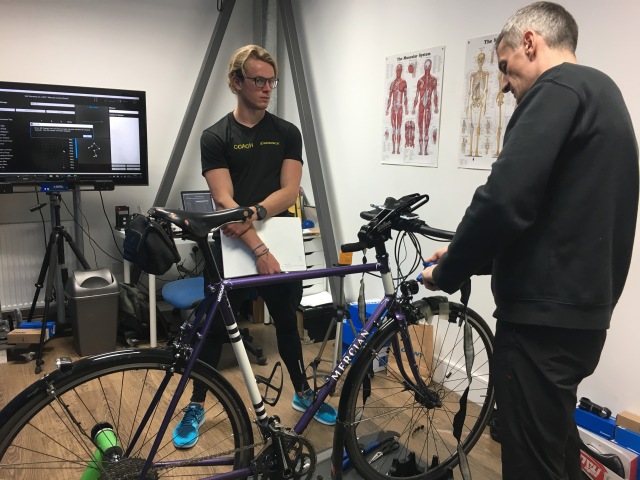 On LEL it was just north of 70 hours. Spending such long a time on the bike is so much easier, and more enjoyable, if the bike fits you properly.
On LEL it was just north of 70 hours. Spending such long a time on the bike is so much easier, and more enjoyable, if the bike fits you properly.
The £150 I spent on a bike fit with Cadence Cycling in South London half a year before PBP was probably my most valuable bike-related expense on record.
Simon did not tweak the bike setup a lot, but it still made a big difference.
When I got a new bike in the run up to LEL, I went back to Cadence to replicate the setting. So far, I was able to ride 1000km+ Audaxes without meaningful pain, apart from numb pinkies after 1000km which took about two months to fully heal.
Lesson 9: Ted the Mechanic
(Treat your Audaxing bike like an Airbus)
I think it’s rather irrelevant in Audaxing if you’re riding a Carbon bike or a steel frame, if you have disk brakes or not. What you need – apart from a good bike fit – are reliable, bright lights for the night, and the option to carry the luggage you think you’ll need.
And the bike must not just fit you, it must also work reliably over an amount of hours that most people’s bikes are not used within a year or two.
There are different schools of thoughts what this means in practice. My personal one is: keep it simple. The less technology I haul around, the less can play up. If the trade off between two options is: can I fix it myself or nor?, I usually go for the alternative I can fix.
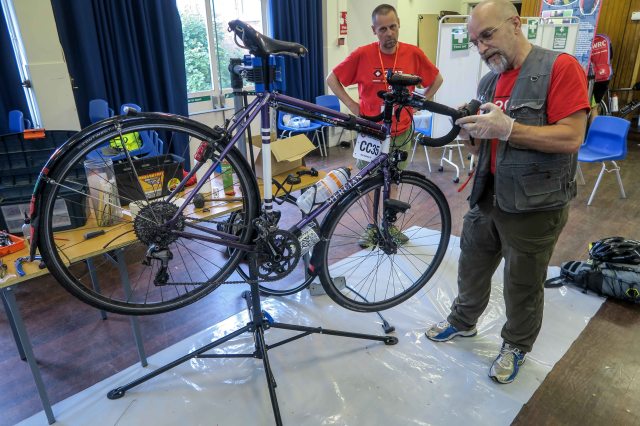
This means: no electronic shifting, no disc brakes, no tubeless tyres. All these options have great arguments in their favour, but they add additional layers of complexity (“Oh bugger, I forgot to charge my Di2 batteries…!”).
Over time, I’ve also become rather paranoid with regard to replacing wearing parts – chains, cables, rims … – before they actually wear out. I learned this the very hard way, as both on PBP as well as LEL I had issues with my rear derailleur cable which started to fray on both rides and needed immediate replacement.
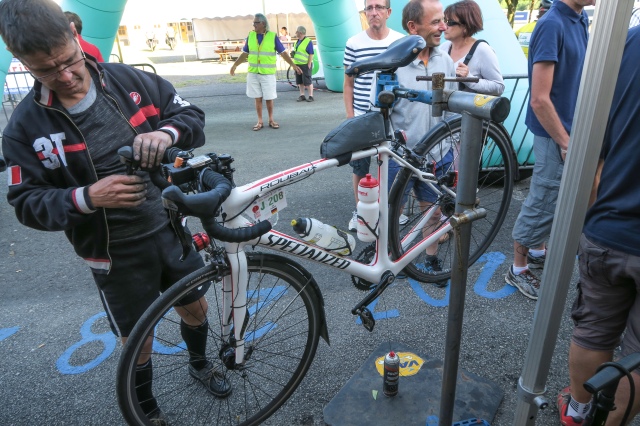
I now know how to replace it myself, and am doing this every 6000km or so. On my new frame, I will use bar end shifters, as they do not wear out the cables as massively as STi shifters, and changing the cable is even easier.
For mission critical parts – the lights, tyres on long rides, and navigation – I carry a backup system. My first choice for lighting is a hub dynamo, as it is just reliable and rarely lets you down.
But I nonetheless have battery front and rear lights on the bike just in case. And guess what, I needed them twice over the last 12 months. On LEL, the cable to the rear light was rubbed through by the tyre, and on a very cold 200 in February, my hub dynamo froze in.
My basic attitude regarding Brevet bike maintenance is: treat the bike like an Airbus. In aircrafts, key systems like the engine are always there twice, and crucial parts are replaced way ahead of their technical life-span.
Lesson 10: Paris sera toujours Paris!
(Paris-Brest-Paris just rocks)
So here’s my ultimate piece of advice for anybody toying with the idea of having a go at long-distance cycling. If you love riding your bike, odds are high that you’ll like it. And if you like doing normal Audaxes, you will definitely love Paris-Brest-Paris. Riding it in 2015 was one of the best things I’ve ever done in life.
The event is special in so many different ways. It’s legacy is amazing as it is older than the modern Olympic games. No other long-distance cycling event has so many participants from so many different parts of the word – PBP really feels like a United Nations on the bike. And the atmosphere along the route is just utterly amazing.
The further west you come, and the smaller the villages get, the bigger the parties become. The charme and support from the French people is just mind-blowing.
The entry process take a bit of effort, as you will have to ride a full SR series (a 200km, a 300km, a 400km and a 600km Brevet) in the same season to qualify.
Moreover, as demand for places will probably be larger than the ride’s capacity, the organisiers have developed a pre-registration system (details here). But trust me, it’s really worth the effort. PBP is just one of the most wonderful things on a bike you can do on the planet.
So looking forward to seeing you in Paris next August! Bonne courage!

Good write up! Let’s hopefully see in PBP,2019
A great read, Olaf! Thanks.
Great read. Thank you.
Well done and get well soon!
All the best!
What eloquent insights Olaf – you certainly aren’t faffing around off the bike while injured… This was a very useful download of experience.
I’m still at the ‘thinking as far as the next control’ stage of breaking rides down… Not thinking about the distance at all seems mystical. In the “R@T where pub used to be” days prior to GPS I needed to be constantly aware of distance so as not to miss a turn. Turn by turn navigation has let me forget about instructions like “L in 4.5km (no signpost)”
Preparation with GPS has shifted to happening weeks before a ride: carefully plotting my route from the sheet. So I’ve no one to blame but myself if the route goes wrong. Google Street View has made knowing exactly where a control is much much easier.
Thank you – and my prayers for your speedy recovery.
Graeme.
Pingback: Audax Mythbusting - GraceQOM
Loved this blog, Olaf. Thanks for sharing and good luck in your recovery. I hope to see you on the road. Toying with PBP qualification at the moment. Need to find a decent 400 before September!
GWS boss, heal well. Your advice about the Black Dog is as good for life as it is for Audax. Keep going, and you’ll outrun the bloody thing.
Some really interesting insights many of which I have experienced directly when riding with you.
The critical insight that jumped out was the stat about the efficiency of riding on the 2nd legs. of long rides.
Anyway good food for thought for by strategy to qualify and ride my 1st PBP
See you their
That was a rather nice up-beat read.
Thanks!
Ride on!
Olaf, vielen Dank für deine Erfahrungen.
Nice write up and interesting advices.
Get well soon
Regards.
Calls electronic shifting “too complex”. Proceeds to complain about breaking shifter cables and the need to replace them frequently.
I haven’t broken or had to replace a shifter cable since I got Di2 six years ago. Nor have I ever run out of battery on a ride. It’s actually a much simpler solution than having to keep buying and manually re-running new cables two or three times a year.
YMMV, tho.
Well, as I say in the piece: “There are different schools of thoughts what this means in practice” and, with regard to stuff like Di2: “these options have great arguments in their favour”.
So yes, YMMV.
I know quite a few riders who use Di2, and almost everyone of them had issues that were ride-ending (mostly drained batteries) or at least stress-causing (things like forgetting to take Di2 charger on week-long cycling holiday in Mallorca).
I seriously gave eTap a thought when planning n+1, which will follow the “Rinko” philosophy https://janheine.wordpress.com/2015/12/17/rinko-parts-useful-not-only-for-train-travel/ I eventually decided against it. I don’t want to be dependent on even more things that require a charged battery. Making sure the iPhone is charged is enough of a worry on really long rides for me.
Moreover, I don’t have to change gear cables 2 or 3 times a year. They start to disintegrate after about 6500km. I ride 12000 km a year – but on serveral different bikes. So changing it once a year on my Audaxing bike does the trick. And its a matter of 5 minutes.
nice piece to read!
started riding these audax’s last year, because i was getting fed up with the usual cyclo’s.
distance was not the issue so i suspected no issues.
lot’s of great tips in this piece.
own pace is key that’s for sure! never done more then a 200k so far.
pacing there is most of the time full gaz till 75k or midpoint. after that its easy going on my own pace. works just fine for me.
last month i went for a 300k but had some issues with my lenses (no spare glasses) so i had to abort. but yeah lesson taken!
next attempt will be a 400k. that will be easy going from the start or if i’m in a good group maybe later. depending on feel and heart rate in that group.
have fun on your next adventures
ps PBP is on my mind, but also the ??? never done multiple day rides
Thanks for your nice feedback! Many riders say that they find 400s are the hardest, a view that I share. Good luck with your plans!
Pingback: Linkempfehlung – Das kleinste Ritzel
Thanks for sharing your learning so eloquently and good luck with your recovery. I fractured my patella in December and rode 300km (my longest ever ride) 7 months later. I feel even better now the metal has been removed but it will take a while to get back to full strength.
Hi Olaf,
Tolle Seite!
Meine alten Randonneurskollegen tun sich nur schwer mit dem englischen!
Falls mal Zeit gerne übersetzen! 😉
Bis PBP 2019
Grüße Thomas
Very nice read! Thank you very much for sharing your experience!
Fantastic article – thanks so much for taking the effort to write this. I’ll try some of these tips on pbp. Particularly the sleep schedule stuff.
Good luck with your recovery, I hope you get where you’re going.
See you up the road!
Amazing writeup, Olaf. Beautifully worded with lots of takeaways. Could identify with a lot of situations and predicaments.
See you at Rambouillet.
Great article Olaf and well done
Pingback: Beyond the jitters and through the bulge – my PBP 2019 – Cycling Intelligence
Thank you!
Thank you a lot. “Just keep riding, and you’ll get there eventually” is the best advice!